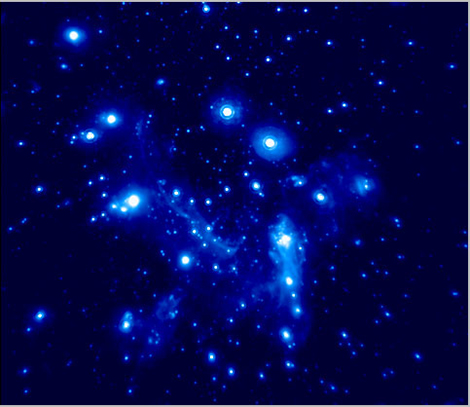Global S&T Development Trend Analysis Platform of Resources and Environment
| GRAVITY confirms predictions of general relativity near the Galactic Centre Massive Black Hole | |
| admin | |
| 2018-07-26 | |
| 发布年 | 2018 |
| 语种 | 英语 |
| 国家 | 法国 |
| 领域 | 地球科学 |
| 正文(英文) | Observations made with the Very Large Telescope (VLT) of the European Southern Observatory (ESO) have, for the first time, detected the effects of general relativity predicted by Einstein, in the movement of a star passing into the intense gravitational field of Sagittarius A*, a massive black hole at the centre of the Milky Way. These results were obtained by the GRAVITY consortium1, led by the Max Planck Institute for Extraterrestrial Physics (MPE) in Germany and also involving the CNRS, the Paris Observatory (PSL), the Université Grenoble-Alpes and several French universities. These findings, the culmination of 26 years of observations using telescopes at the ESO in Chile, were published by the GRAVITY consortium on 26 July 2018 in Astronomy & Astrophysics.Sagittarius A* (Sgr A*) sits at the centre of our galaxy, 26,000 light-years from Earth. This black hole, which has a mass 4 million times that of the sun, is surrounded by a star cluster the S stars which reach mind-boggling speeds when they approach the hole. General relativity describes the effects of matter on the movement of stars, and more specifically, in this case, the effects of a black hole on the stars surrounding it. The stars of Sgr A*, located in the Milky Way's most powerful gravitational field, are a perfect laboratory in which to test Einstein's general theory of relativity. Astronomers used three VLTs NACO, SINFONI, and more recently GRAVITY to follow one particular star in the Sgr A* system S2 before and after it passed close to the black hole on 19 May 2018. GRAVITY achieved a resolution of 50 microarcseconds: the angle at which a tennis ball placed on the moon would be visible from Earth. This accuracy made it possible to detect the hour-by-hour movement of S2 as close as possible to the black hole. When S2 passed by Sgr A* at a distance just 120 times that of the Earth from the Sun, it reached an orbital velocity of 8000 km/s: 2.7 % of the speed of light. These extreme conditions suffice for the S2 star to be subjected to the effects of general relativity. By combining previous measurements made using NACO and SINFONI with GRAVITY's precision on the position of S2, astronomers were able to detect the gravitational redshift which Einstein predicted. Redshift affects light sources that are in a gravitational field; in this case, the black hole. The phenomenon produces a shift in wavelength toward the red part of the spectrum which is detected by a measuring instrument. This is the first time the effect has been measured in the gravitational field of a black hole. These results are perfectly in line with the theory of general relativity (and not explained by Newton's theory, which excludes such a shift). They are a major breakthrough towards better understanding the effects of intense gravitational fields. Shifts in the trajectory of S2 due to gravity will be detected in a few months, and could yield information on mass distribution around the black hole.
 © Paris Observatory / LESIA Centre: Sagittarius A* and its star cluster
Notes:1GRAVITY is a second-generation VLT interferometer (VLTI) developed by the GRAVITY consortium: Bibliography:Detection of the Gravitational Redshift in the Orbit of the Star S2 near the Galactic Centre Massive Black Hole, GRAVITY Collaboration, Astronomy & Astrophysics, July 2018. DOI: 10.1051/0004-6361/201833718 Contacts: CNRS researchers |
| URL | 查看原文 |
| 来源平台 | Centre national de la recherche scientifique |
| 文献类型 | 新闻 |
| 条目标识符 | http://119.78.100.173/C666/handle/2XK7JSWQ/106976 |
| 专题 | 地球科学 |
| 推荐引用方式 GB/T 7714 | admin. GRAVITY confirms predictions of general relativity near the Galactic Centre Massive Black Hole. 2018. |
| 条目包含的文件 | 条目无相关文件。 | |||||
| 个性服务 |
| 推荐该条目 |
| 保存到收藏夹 |
| 查看访问统计 |
| 导出为Endnote文件 |
| 谷歌学术 |
| 谷歌学术中相似的文章 |
| [admin]的文章 |
| 百度学术 |
| 百度学术中相似的文章 |
| [admin]的文章 |
| 必应学术 |
| 必应学术中相似的文章 |
| [admin]的文章 |
| 相关权益政策 |
| 暂无数据 |
| 收藏/分享 |
除非特别说明,本系统中所有内容都受版权保护,并保留所有权利。
修改评论